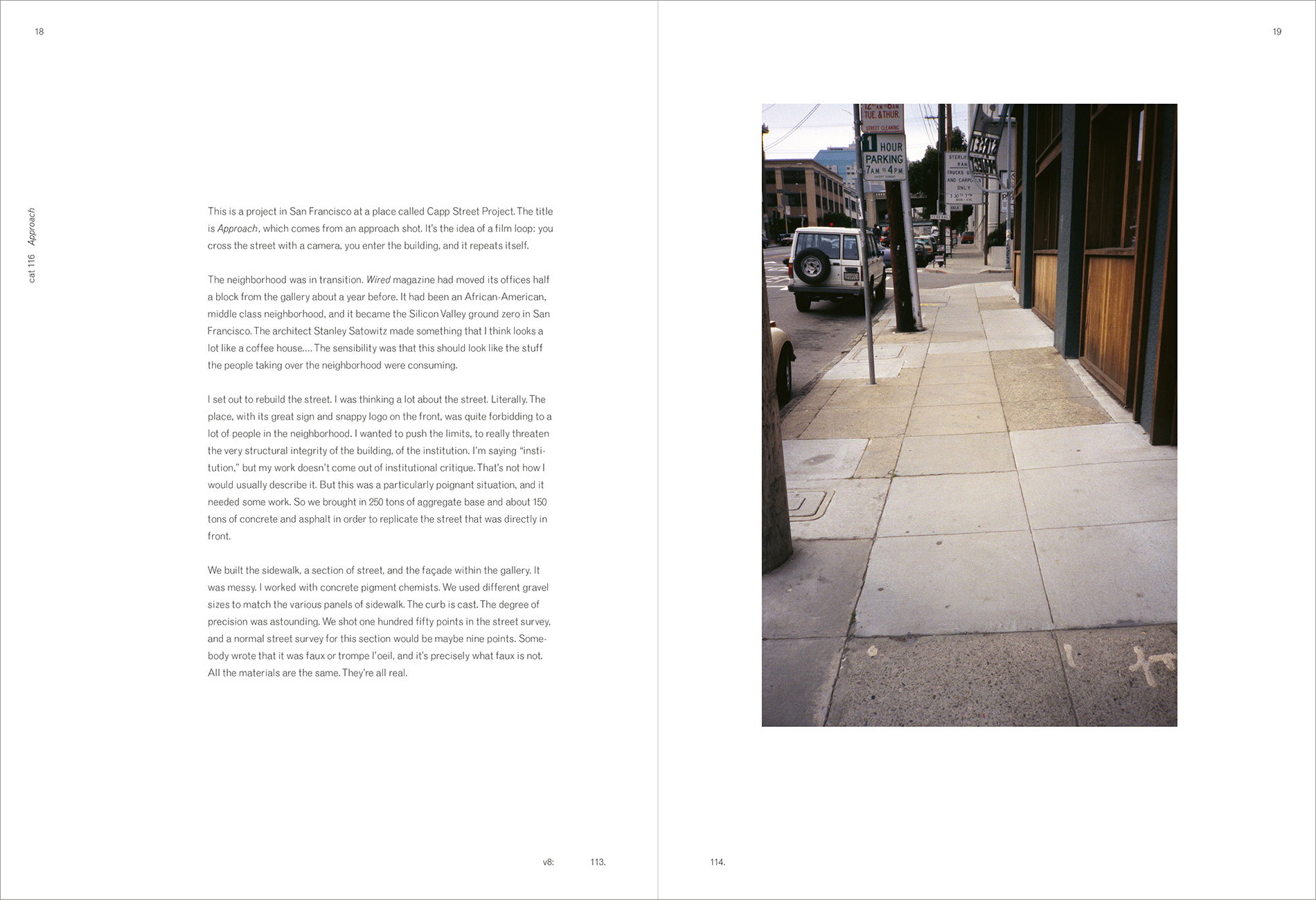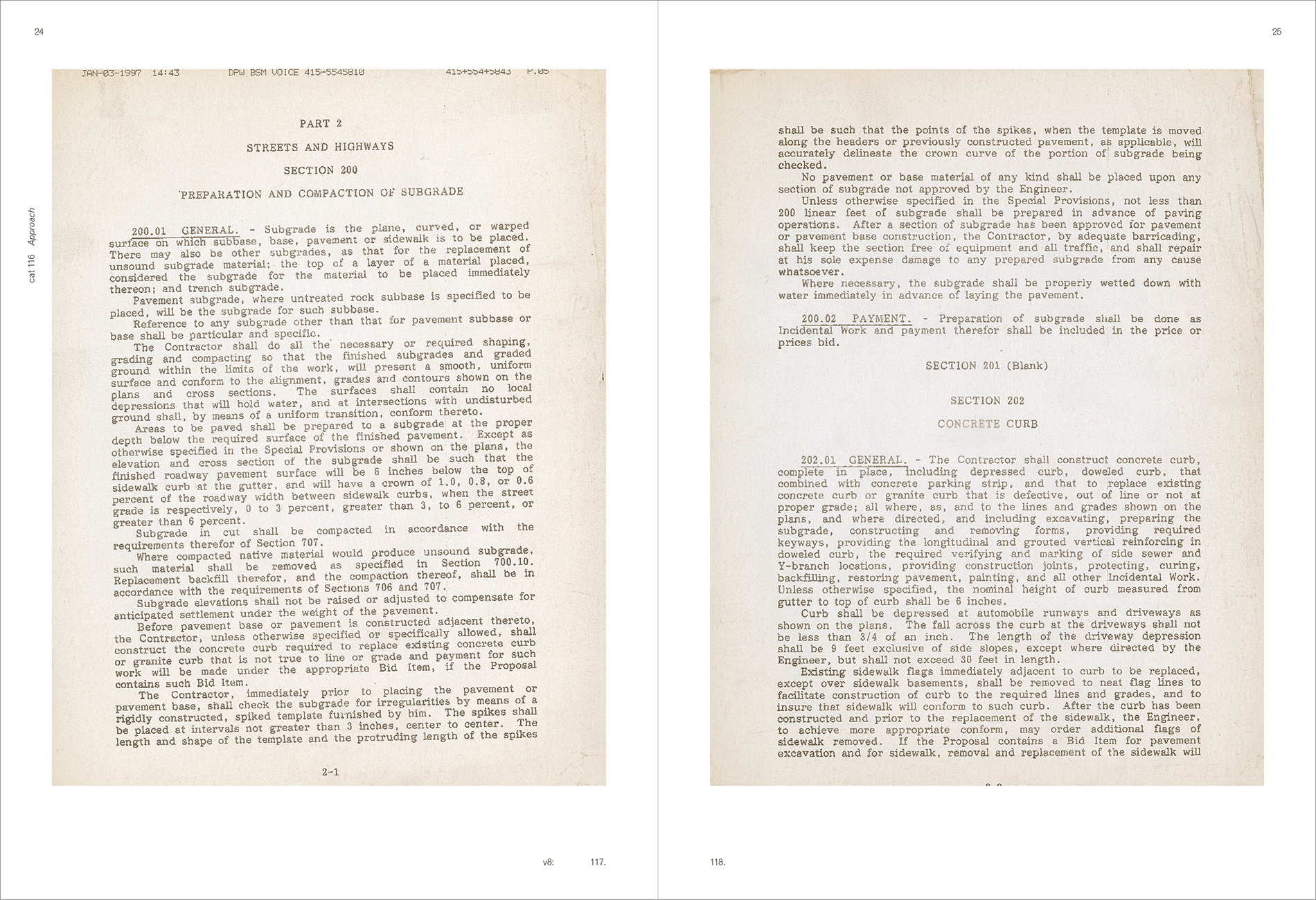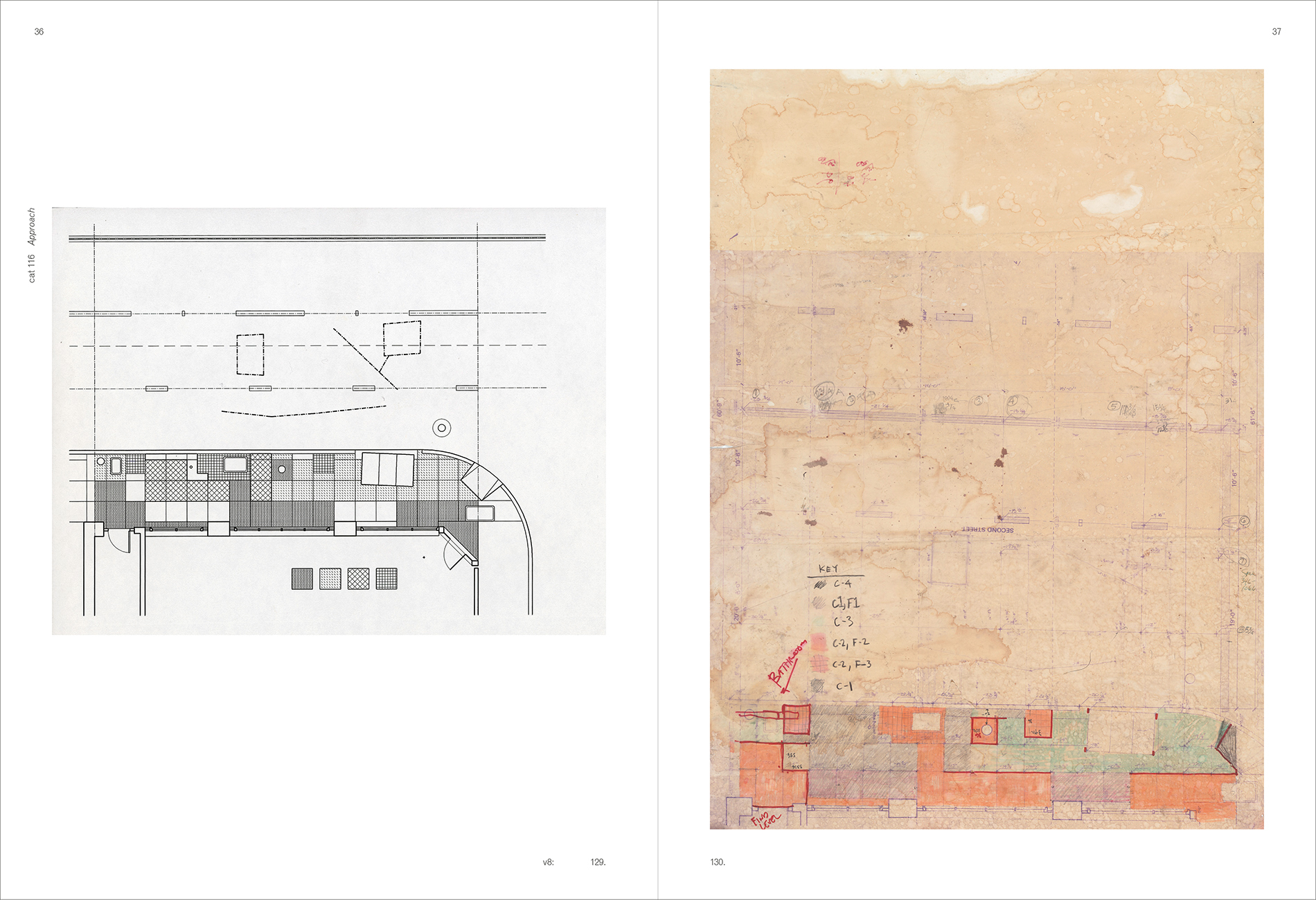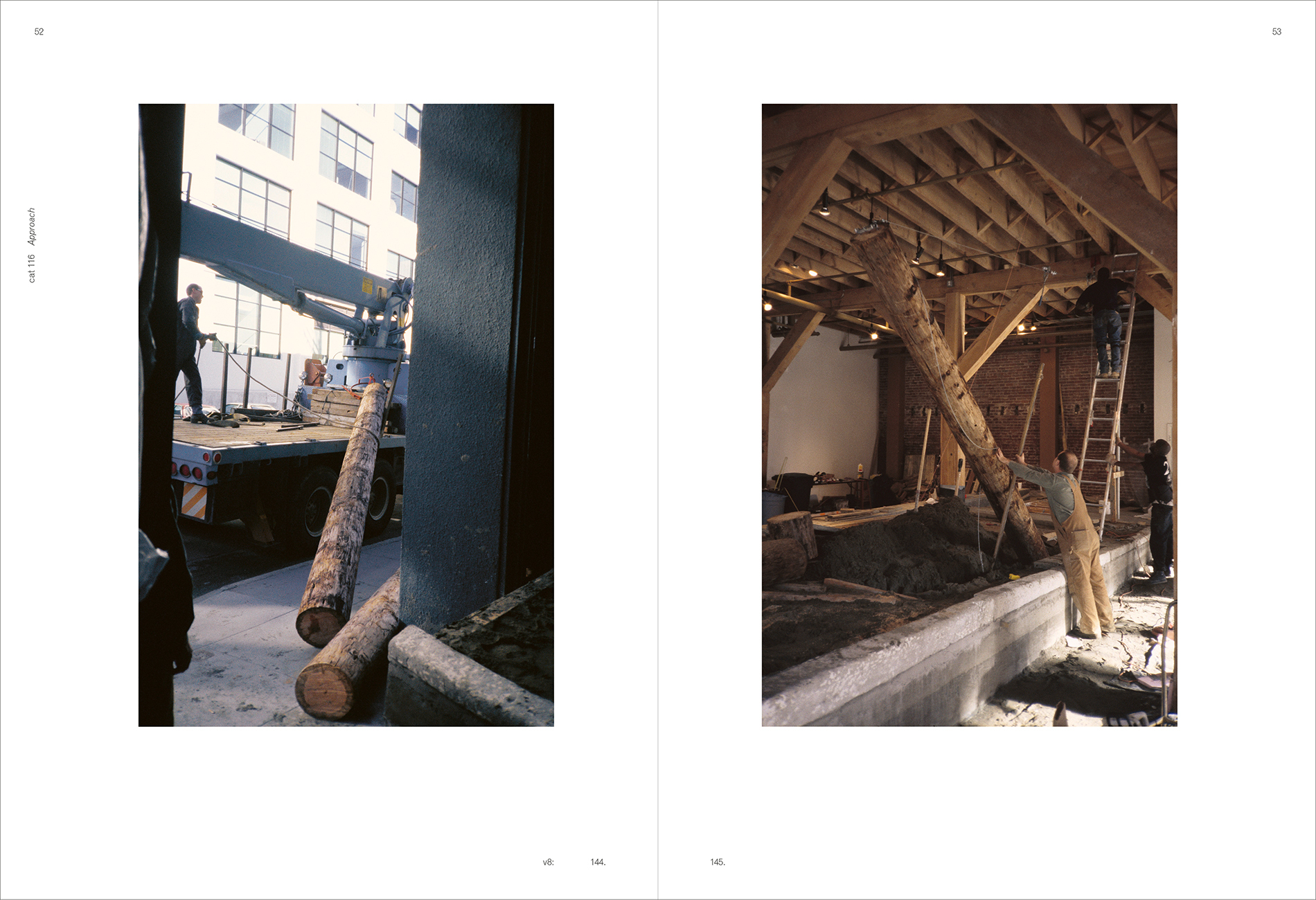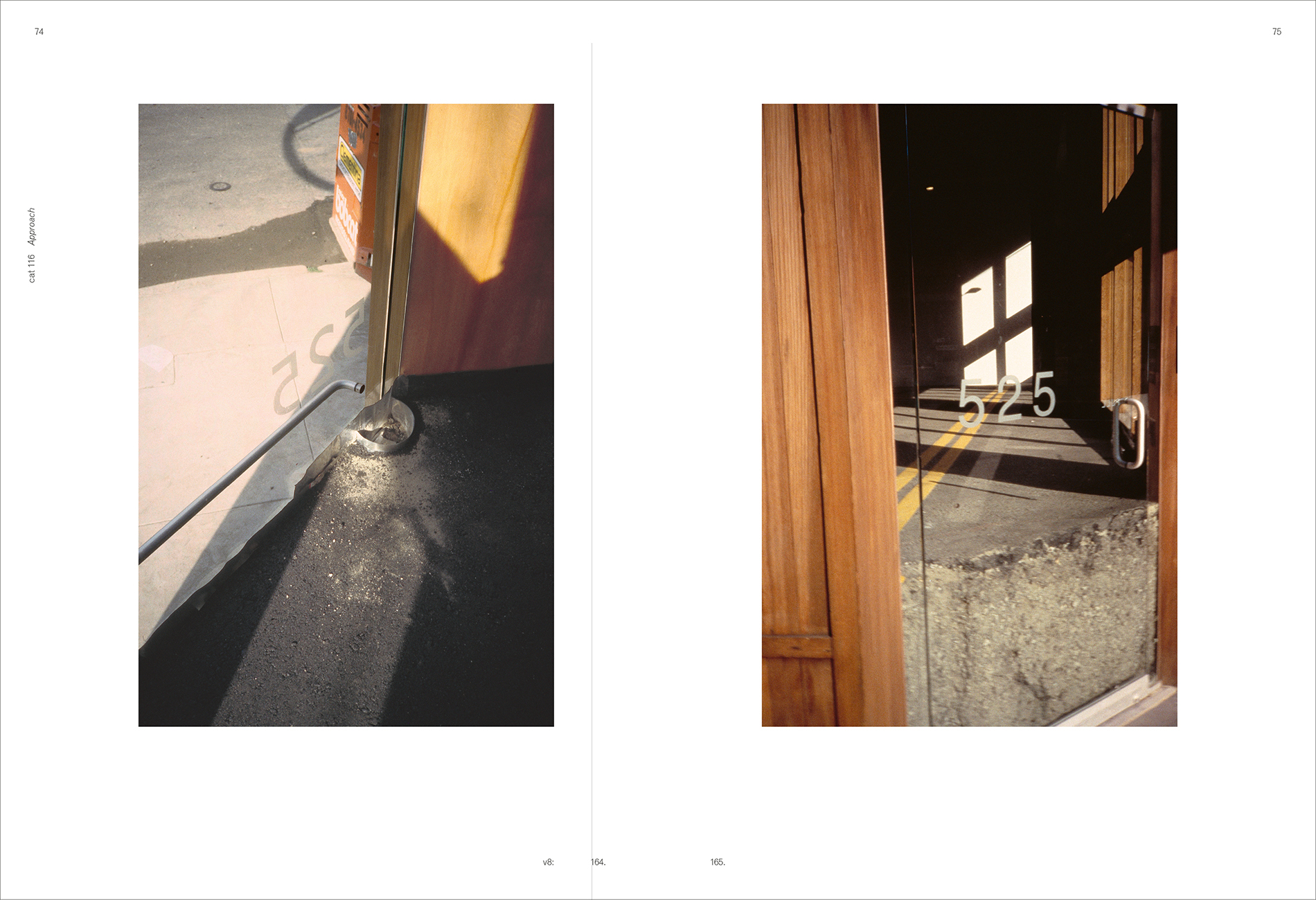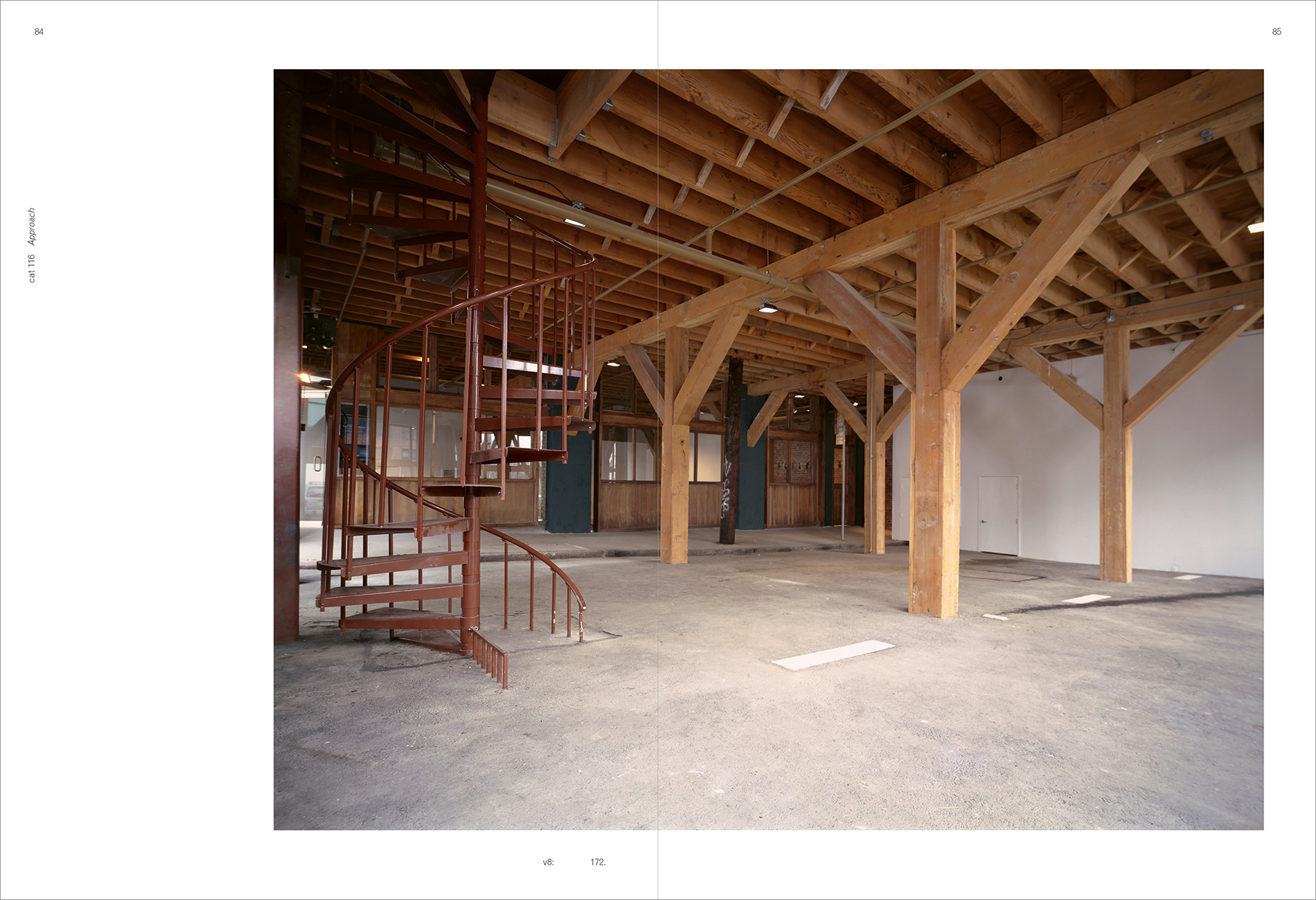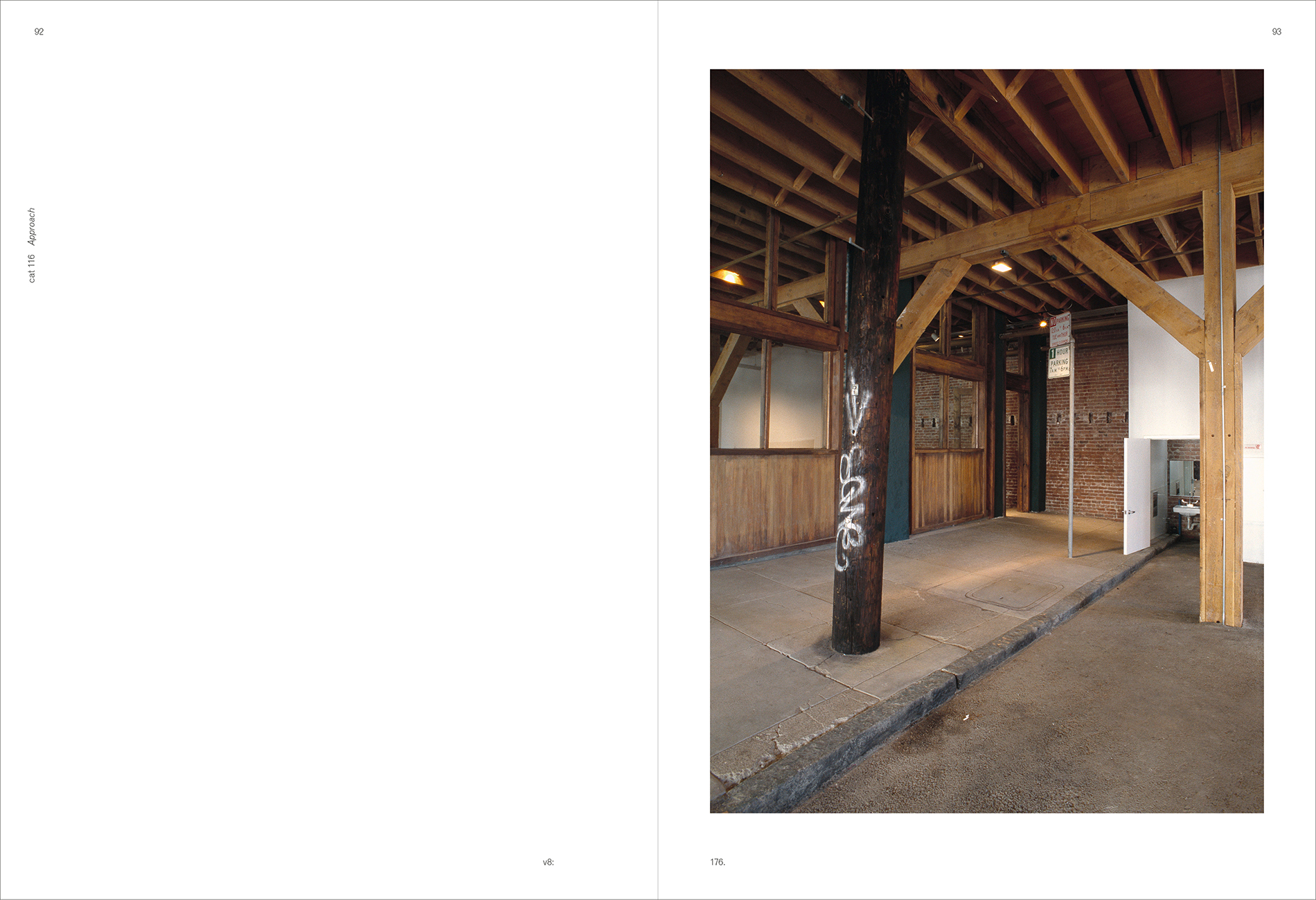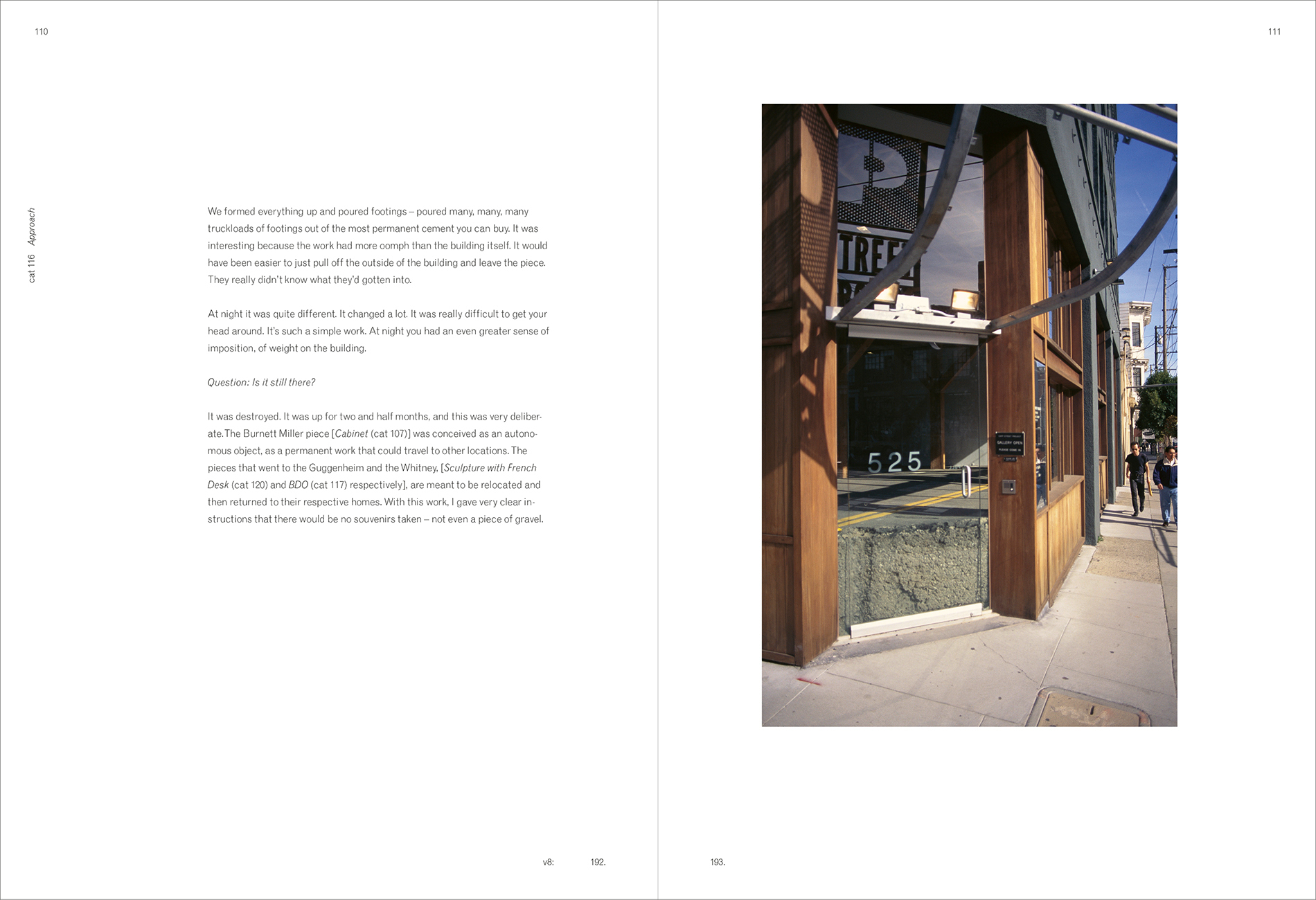Glen Seator: Making Things Moving Places
v8 / Approach, 1997
This is a project in San Francisco at a place called Capp Street Project. The title is Approach, which comes from an approach shot. It’s the idea of a film loop: you cross the street with a camera, you enter the building, and it repeats itself.
The neighborhood was in transition. Wired magazine had moved its offices half a block from the gallery about a year before. It had been an African-American, middle class neighborhood, and it became the Silicon Valley ground zero in San Francisco. The architect Stanley Satowitz made something that I think looks a lot like a coffee house…. The sensibility was that this should look like the stuff the people taking over the neighborhood were consuming.
I set out to rebuild the street. I was thinking a lot about the street. Literally. The place, with its great sign and snappy logo on the front, was quite forbidding to a lot of people in the neighborhood. I wanted to push the limits, to really threaten the very structural integrity of the building, of the institution. I’m saying „institution,“ but my work doesn’t come out of institutional critique. That’s not how I would usually describe it. But this was a particularly poignant situation, and it needed some work. So we brought in 250 tons of aggregate base and about 150 tons of concrete and asphalt in order to replicate the street that was directly in front.
We built the sidewalk, a section of street, and the façade within the gallery. It was messy. I worked with concrete pigment chemists. We used different gravel sizes to match the various panels of sidewalk. The curb is cast. The degree of precision was astounding. We shot one hundred fifty points in the street survey, and a normal street survey for this section would be maybe nine points. Somebody wrote that it was faux or trompe l’oeil, and it’s precisely what faux is not. All the materials are the same. They’re all real.
There’s a sense that the work named the street and also its trajectory as a work. It was a very strange thing for anyone who spent time in the work. I think there were sixty people who worked on it, and I ran between them doing little workshops. As you left the work, you had this sense that it seemed to train you, to create a habit of vision.
If the work at Capp Street hadn’t been such a literal overlay of the actual approach to the place – street, sidewalk, façade, then empty gallery – it wouldn’t have been so confounding. You could never quite get your head around it. It was where you were – and where you were a few minutes before. There was the view out, then the view back. I think of it like an eighteenth-century painting that depicts the view from the space in which it was hung.
v8 /Approach, 1997
Lay-flat softcover binding with a stitched book block and reinforced spine
Page dimensions: 19 x 26 cm (7.5 x 10.25 in.)
136 pages
1 work / 215 color and tritone reproductions of sources from the archive
cat 116 Approach, 1997
Shown above:
v8 / pages 18-19; 24-25; 36-37; 46-47; 52-53; 74-75; 84-85; 90-91; 92-93; 110-111
work / cat 116 Approach, 1997
sources / v8: 113, 114, 117, 118, 129, 130, 138, 139, 144, 145, 164, 165, 172, 175, 176, 192, 193
